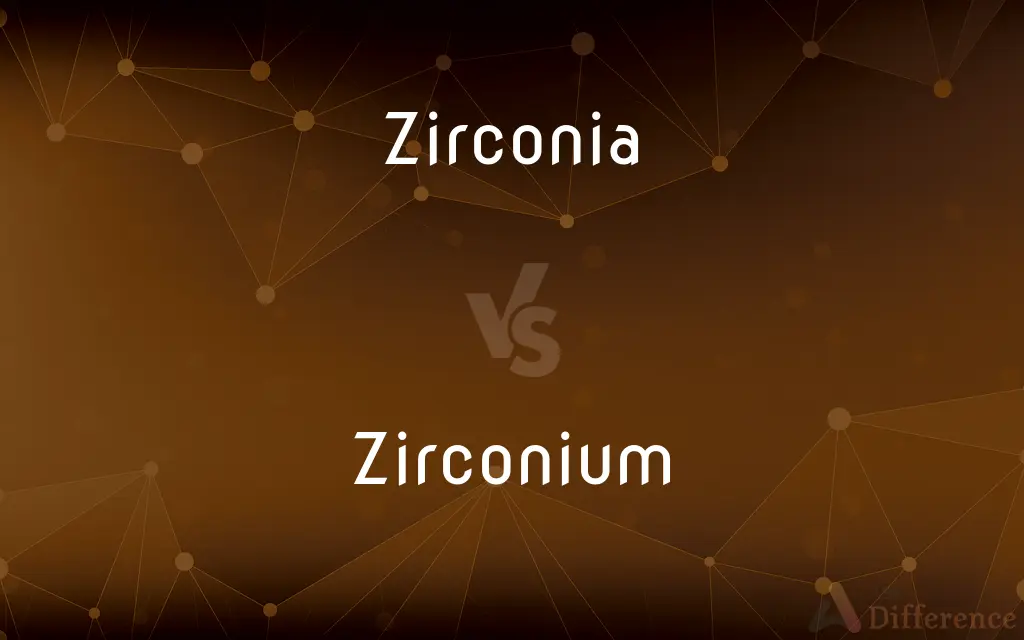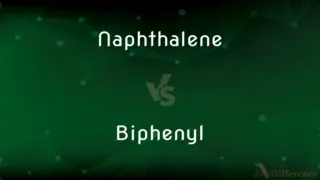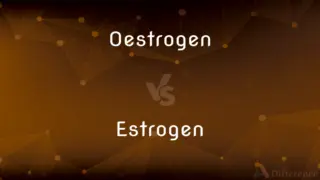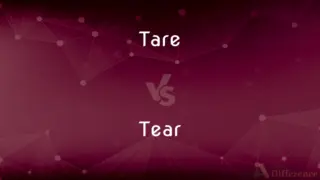Zirconia vs. Zirconium — What's the Difference?
By Tayyaba Rehman & Fiza Rafique — Updated on March 12, 2024
Zirconia (ZrO2) is a crystalline oxide of zirconium, known for its high strength and durability, whereas zirconium (Zr) is a metallic element used in various alloys and nuclear applications.

Difference Between Zirconia and Zirconium
Table of Contents
ADVERTISEMENT
Key Differences
Zirconia, or zirconium dioxide, is a white crystalline compound widely used in ceramics, dentistry, and jewelry due to its remarkable durability, resistance to corrosion, and aesthetic appeal. It's known for its diamond-like brilliance and hardness, making it a popular choice for synthetic gemstones and dental implants. On the other hand, zirconium is a silver-gray transition metal that is malleable and ductile. It's used in a variety of industrial applications, including as an alloying agent to improve the strength and corrosion resistance of metals, and in nuclear reactors due to its low absorption cross-section for thermal neutrons.
While zirconia is praised for its thermal stability and low thermal conductivity, making it suitable for use in harsh thermal environments, zirconium's main advantage lies in its resistance to corrosion, particularly by acids and alkalis. This property is critical in chemical processing equipment and nuclear reactors, where materials must withstand aggressive environments.
In the realm of aesthetics and practical application, zirconia stands out in the jewelry industry as a cost-effective and durable alternative to diamonds, offering brilliance and scratch resistance. Conversely, zirconium, despite its less glamorous applications, plays a crucial role in aerospace and medical industries, where its biocompatibility and resistance to degradation are invaluable.
The production of zirconia from zirconium involves the chemical process of combining zirconium with oxygen, highlighting the transformation from a metallic element to a ceramic compound. This process underscores the versatility of zirconium and its compounds, extending its applications from industrial and technological to consumer products.
Zirconia's role in modern technology and consumer products, particularly in dentistry for crowns and bridges, showcases its importance in fields requiring materials that combine aesthetic qualities with exceptional durability. Meanwhile, zirconium's significance in the nuclear industry, owing to its low neutron absorption, demonstrates its critical role in energy production and safety.
ADVERTISEMENT
Comparison Chart
Composition
Crystalline oxide of zirconium.
Metallic element.
Uses
Ceramics, dentistry, jewelry.
Alloys, nuclear reactors.
Properties
High strength, durability, corrosion resistance.
Malleable, ductile, corrosion-resistant.
Industrial Appeal
Aesthetics (synthetic gemstones), medical applications.
Structural integrity, nuclear applications.
Thermal Properties
Low thermal conductivity, thermal stability.
Not specifically noted for thermal properties.
Appearance
White crystalline compound.
Silver-gray metal.
Significance
Alternative to diamonds, dental applications.
Corrosion resistance, nuclear industry.
Production Process
Derived from zirconium by adding oxygen.
Extracted and refined from mineral sources.
Compare with Definitions
Zirconia
Synthetic gemstone alternative.
Zirconia earrings are popular for their diamond-like shine.
Zirconium
Component in nuclear reactors.
Zirconium's low neutron absorption makes it suitable for nuclear fuel rods.
Zirconia
Corrosion-resistant ceramic.
Zirconia components are used in harsh chemical environments.
Zirconium
Corrosion-resistant material.
Zirconium is ideal for chemical processing equipment.
Zirconia
Crystalline oxide of zirconium.
Zirconia is produced by combining zirconium with oxygen.
Zirconium
Transition metal.
Zirconium alloys are used in aerospace engineering.
Zirconia
Dental material.
Zirconia is used for crowns due to its durability.
Zirconium
Extracted from minerals.
Zirconium is refined from zircon minerals.
Zirconia
High thermal stability.
Zirconia is utilized in furnace linings.
Zirconium
Alloying agent.
Zirconium improves the strength of metal alloys.
Zirconia
Cubic zirconia.
Zirconium
Zirconium is a chemical element with the symbol Zr and atomic number 40. The name zirconium is taken from the name of the mineral zircon (the word is related to Persian zargun (zircon; zar-gun, "gold-like" or "as gold")), the most important source of zirconium.
Zirconia
(chemistry) The oxide of zirconium, obtained as a white powder, and possessing both acid and basic properties. On account of its infusibility, and brilliant luminosity when incandescent, it is used as an ingredient of sticks for the Drummond light.
Zirconium
A lustrous, grayish-white, strong, ductile metallic element obtained primarily from zircon and used in nuclear reactors because of its high resistance to corrosion, used in ceramic and refractory compounds, and alloyed with niobium, zinc, and other metals. Atomic number 40; atomic weight 91.22; melting point 1,855°C; boiling point 4,409°C; specific gravity 6.52 (at 20°C); valence 2, 3, 4. See Periodic Table.
Zirconia
The oxide of zirconium (ZrO2), obtained as a white powder, and possessing both acid and basic properties. On account of its infusibility, and brilliant luminosity when incandescent, it is used as an ingredient of sticks for the Drummomd light.
Zirconium
A chemical element (symbol Zr) with an atomic number of 40, a strong, lustrous, grey-white transition metal mainly used as a refractory and opacifier.
Zirconia
A white crystalline oxide; used in refractories and in insulation and abrasives and enamels and glazes
Zirconium
A rare element of the carbon-silicon group, intermediate between the metals and nonmetals, obtained from the mineral zircon as a dark sooty powder, or as a gray metallic crystalline substance. Symbol Zr. Atomic weight, 90.4.
Zirconium
A lustrous gray strong metallic element resembling titanium; it is used in nuclear reactors as a neutron absorber; it occurs in baddeleyite but is obtained chiefly from zircon
Common Curiosities
Can zirconium be used in jewelry?
While less common, zirconium can be used in jewelry, often undergoing a process to create a black, corrosion-resistant surface.
Is zirconium a rare metal?
Zirconium is not considered rare, but it is less abundant than some other metals, found mainly in the mineral zircon.
Why is zirconium important in nuclear reactors?
Its low absorption cross-section for thermal neutrons prevents it from interfering with the nuclear reactions.
Are zirconium and zircon the same?
No, zirconium is the element, while zircon (ZrSiO4) is a mineral from which zirconium is extracted. Zirconia is a separate compound (ZrO2).
Can zirconia conduct electricity?
Zirconia is generally a poor conductor of electricity, which is why it's used as an insulator in some applications.
What makes zirconia suitable for dental applications?
Its strength, durability, and aesthetic appearance mimic natural teeth, making it ideal for crowns and bridges.
How is zirconia different from cubic zirconia?
Cubic zirconia is a form of zirconia specifically stabilized in the cubic crystal structure to mimic the brilliance of diamonds.
What are the environmental impacts of extracting zirconium?
Like other mining and refining processes, zirconium extraction can impact the environment through habitat disruption and pollution.
How does zirconia resist corrosion?
Zirconia's crystalline structure and stability in various chemical environments make it highly resistant to corrosion.
Does zirconia wear out over time?
While zirconia is extremely durable, like all materials, it can wear or degrade under extreme conditions or over a very long period.
Share Your Discovery

Previous Comparison
Ant vs. Tiger
Next Comparison
Naphthalene vs. BiphenylAuthor Spotlight
Written by
Tayyaba RehmanTayyaba Rehman is a distinguished writer, currently serving as a primary contributor to askdifference.com. As a researcher in semantics and etymology, Tayyaba's passion for the complexity of languages and their distinctions has found a perfect home on the platform. Tayyaba delves into the intricacies of language, distinguishing between commonly confused words and phrases, thereby providing clarity for readers worldwide.
Co-written by
Fiza RafiqueFiza Rafique is a skilled content writer at AskDifference.com, where she meticulously refines and enhances written pieces. Drawing from her vast editorial expertise, Fiza ensures clarity, accuracy, and precision in every article. Passionate about language, she continually seeks to elevate the quality of content for readers worldwide.















































